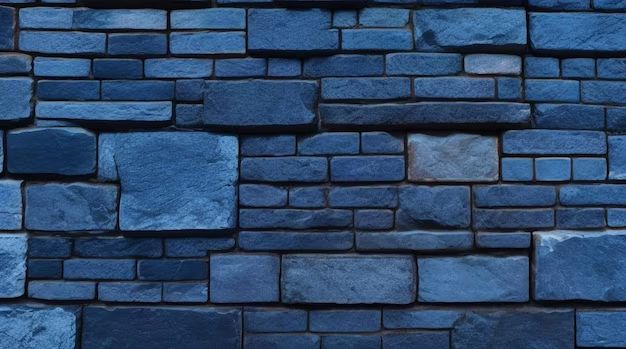When selecting a stone to pair with brick, there are a few key factors to consider in order to achieve a cohesive and aesthetically pleasing design. The color, texture, and style of the stone should complement the brickwork while creating visual interest and depth. With the right combination of materials, you can create a beautiful and long-lasting facade or landscape feature.
Page Contents
Matching Color Tones
Color is one of the most important considerations when pairing stone with brick. You generally want tones that are analogous, meaning they sit next to each other on the color wheel. For traditional red brick, some of the most popular options include:
- Tan or buff-colored limestone or sandstone
- Brown, rust, or mahogany granite
- Gray slate or bluestone
Staying within the same color family will give a cohesive look. Stones that are too dark or too light can look disjointed against the brick. Complementary colors like deep burgundy can work as accents, but should be used sparingly.
Texture
The texture of the stone is another essential factor, as you want it to work seamlessly with the look and feel of the bricks. Brick has a distinct compressed and layered appearance. Stones that also have strata or layering will complement brick best. Options include:
- Sedimentary stones like limestone, sandstone, and slate
- Metamorphic stones like quartzite and marble
- Cut stone wall cladding with a stacked or layered look
Polished granites and marbles have less texture and strata, making them better suited to brick accents rather than full veneers. A heavily textured stone can also look too busy next to brick.
Style
The architectural style of the home or building should also inform your stone selection. For traditional homes with classic red brick construction, stones like weathered sandstone or limestone have an old-world, natural appearance that complements the look beautifully. Bluestone and slate also have a timeless style.
For more contemporary homes, you may want a cleaner lined stone without as much texture. Stacked stone walls and tiles can create a modern veneer thatpairs nicely with sleek or uniquely colored brick facades. Marble, granite, and quartzite are popular contemporary options.
Stone Sizing and Shape
In addition to type of stone, the size, dimensions, and shapes used also impact the overall look. Brick has a standard modular size. Stone veneers, tiles, and pavers should be proportional and complement the brick shape.
Some guidelines:
- Stone slabs should be a similar height as brick rows
- Stacked stone walls can mirror the height of brick courses
- Mosaic stone tiles and pavers should be around 1/3 the height of bricks for good scale
- Incorporate some rectangular stone shapes to tie into the brick dimensions
A mix of stone sizes, shapes, and orientations can add interest, but make sure it aligns with the brickwork design.
Grouted vs Ungrouted Stone
When installing a stone veneer adjacent to brick, you have the choice of mortared stone or drystack. Mortared stone has grouted joints similar to brick, creating a continuous look. Ungrouted or drystacked stone has a rougher, freeform appearance but can complement aged brick beautifully.
For a contemporary façade, grouted stone is often preferred for its clean lines. Drystack stone works better for casual outdoor living spaces.
Best Brick and Stone Combinations
Now that we’ve covered how to match stone with brick, here are some of the most popular combinations:
- Sandstone – Works with almost any brick, depending on the color. Buff and tan sandstones pair nicely with classic red brick. Grayer modular sandstone matches dark brick.
- Limestone – Offers a classic and timeless feel. Lighter cream or honey-hued limestone creates contrast against dark brick.
- Fieldstone – A natural uncut stone with earthy gray and brown tones. Its organic texture fits well with weathered and antique brick.
- Bluestone – Has a cool grayish-blue hue that complements warm red brick. Its cleft texture pairs well with the strata of brick.
- Slate – A dark gray/blue/purple stone perfect for adding contrast and interest. Works with most brick colors.
- Granite – Polished black granite can create a sophisticated facade. Rustic cut granite in earth tones or reds complements softer bricks.
- Marble – Elegant white or gray marble offsets darker brick. Effective for accents rather than full veneers.
- Quartzite – The rough cut texture and red/brown hues pair well with handmade and rustic bricks.
Tips for Installation
Proper installation of the stone and brickwork ensures a cohesive finished product:
- Plan out the pattern to find an appealing layout of stones, bricks, and any grouted lines.
- Dry fit the stone before installation to get the optimal look.
- Keep stone veneer courses/rows aligned with brick rows for best results.
- Maintain mortar joint thickness in both materials for consistency.
- Use color matched grout for grouted stone installations.
Conclusion
The combination of brick and stone can create stunning visually interest in everything from homes to landscape walls. Pay attention to color, texture, style, and size when selecting a coordinating stone. Popular pairings include sandstone, bluestone, slate, limestone, and fieldstone which beautifully complement the depth and warmth of brick. With a thoughtful design and proper installation, you can enjoy a cohesive and seamless integration of these timeless materials.
